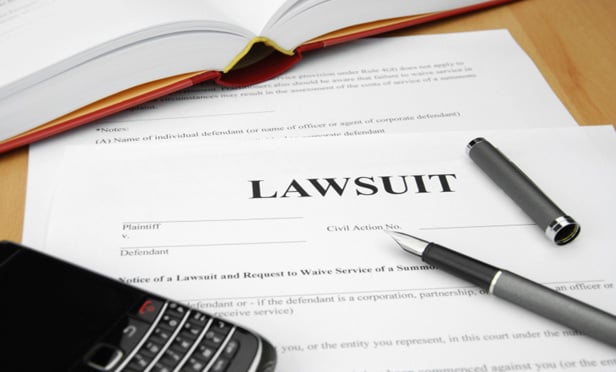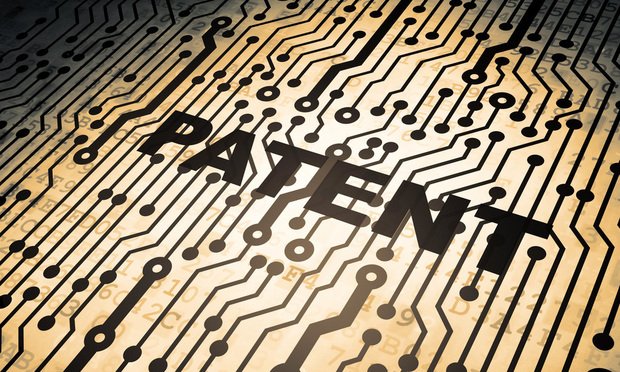Columns & Departments

Development
City Had Authority Over Tree Removal on Privately Owned Streets
Features

New York Real Estate Law Reporter Is Going Digital Only. Here's What You Need to Know.
The final print edition of New York Real Estate Law Reporter will be our January issue.
Features

A Race Against Time: Mastering the Art of Timely Lawsuit PR
News publications want to report verdicts and judgments the day they are handed down. Waiting to contact the media until after your case is decided means you've missed numerous opportunities to publicize your great work.
Features

Start 2024 By Considering The Synergy Between Retirement and Succession Planning
Attorney retirement and succession planning are critical issues that are often overlooked at the management level of law firms. A key question arises: What should come first, retirement or succession planning? Although they go hand in hand, many firms avoid addressing both.
Features

Chambers & Partners: What's New After Sale
On Nov. 10, 2023, Abry Partners, a leading North American middle market private equity firm, announced that it had acquired Chambers & Partners for $449 million from Inflexion, the UK private equity firm that purchased Chambers in 2018. What will this mean?
Features

Tips to Great Legal Marketing in 2024
It's a new year and as always, the prognosticators are prognosticating, and the forecasters are forecasting. And the predictions for 2024 are all over the place.
Features

Marketing the Law Firm Is Going Digital Only. Here's What You Need to Know.
The final print edition of Marketing the Law Firm will be our January issue.
Features

Can Artificial Intelligence Patents Survive Alice?
Part One of a Two-Part Article Under the current Alice framework, those attempting to patent AI innovations face an uphill battle. But, as the caselaw demonstrates, inventors and patent drafters can take steps to reduce the risk of AI patent claims being invalidated as abstract ideas.
Features

Creative Expression vs. the Lanham Act: Six Months of Cases After Jack Daniel's
Last Term, the U.S. Supreme Court decided Jack Daniel's v. VIP Products — a case involving interaction between the Lanham Act and the First Amendment. This article traces the lower courts' reactions and applications to that decision.
Columns & Departments

IP News
Federal Circuit: PTAB Did Not Err In Finding That It Retained Authority to Issue Final Written Decision After Deadline Passed Federal Circuit: District Court Did Not Err In Finding That an Abbreviated New Drug Application Is Limited to the Uses Described Therein
Need Help?
- Prefer an IP authenticated environment? Request a transition or call 800-756-8993.
- Need other assistance? email Customer Service or call 1-877-256-2472.
MOST POPULAR STORIES
- The 'Sophisticated Insured' DefenseA majority of courts consider the <i>contra proferentem</i> doctrine to be a pillar of insurance law. The doctrine requires ambiguous terms in an insurance policy to be construed against the insurer and in favor of coverage for the insured. A prominent rationale behind the doctrine is that insurance policies are usually standard-form contracts drafted entirely by insurers.Read More ›
- A Lawyer's System for Active ReadingActive reading comprises many daily tasks lawyers engage in, including highlighting, annotating, note taking, comparing and searching texts. It demands more than flipping or turning pages.Read More ›
- The Brave New World of Cybersecurity Due Diligence in Mergers and Acquisitions: Pitfalls and OpportunitiesLike poorly-behaved school children, new technologies and intellectual property (IP) are increasingly disrupting the M&A establishment. Cybersecurity has become the latest disruptive newcomer to the M&A party.Read More ›
- Abandoned and Unused Cables: A Hidden Liability Under the 2002 National Electric CodeIn an effort to minimize the release of toxic gasses from cables in the event of fire, the 2002 version of the National Electric Code ("NEC"), promulgated by the National Fire Protection Association, sets forth new guidelines requiring that abandoned cables must be removed from buildings unless they are located in metal raceways or tagged "For Future Use." While the NEC is not, in itself, binding law, most jurisdictions in the United States adopt the NEC by reference in their state or local building and fire codes. Thus, noncompliance with the recent NEC guidelines will likely mean that a building is in violation of a building or fire code. If so, the building owner may also be in breach of agreements with tenants and lenders and may be jeopardizing its fire insurance coverage. Even in jurisdictions where the 2002 NEC has not been adopted, it may be argued that the guidelines represent the standard of reasonable care and could result in tort liability for the landlord if toxic gasses from abandoned cables are emitted in a fire. With these potential liabilities in mind, this article discusses: 1) how to address the abandoned wires and cables currently located within the risers, ceilings and other areas of properties, and 2) additional considerations in the placement and removal of telecommunications cables going forward.Read More ›
- Guidance on Distributions As 'Disbursements' and U.S. Trustee FeesIn a recent case from the Bankruptcy Court for the District of Delaware, In re Paragon Offshore PLC, the bankruptcy court provided guidance on whether a post-plan effective date litigation trust's distributions constituted disbursements subject to the U.S. Trustee fee "tax."Read More ›
